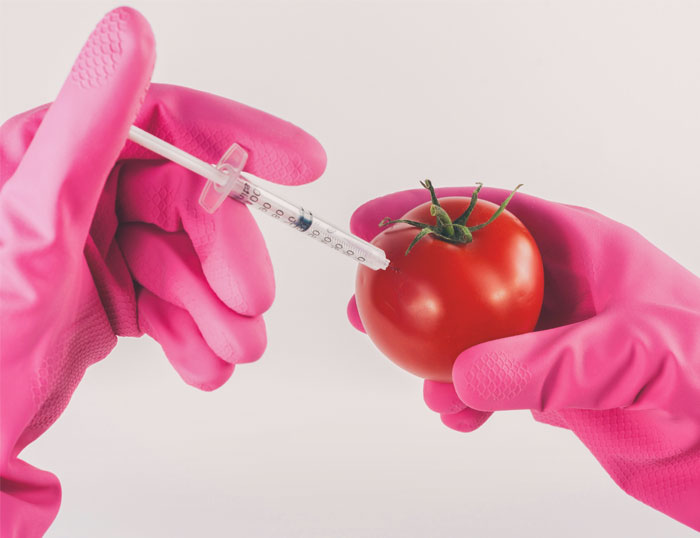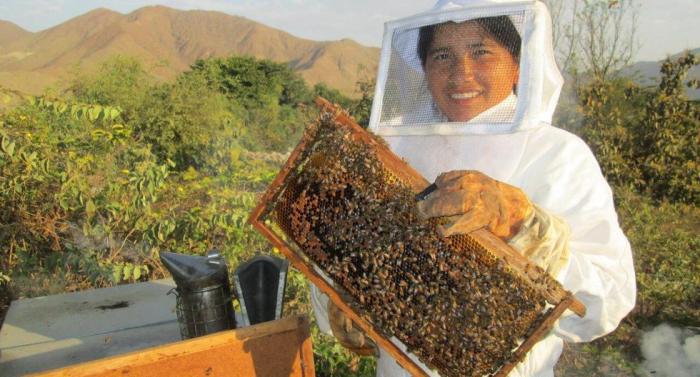Qué es un alimento adulterado – Qué es un alimento adulterado: Una mirada a las prácticas poco éticas en la industria alimentaria, este artículo explora el inquietante mundo de la adulteración de alimentos, revelando las impactantes verdades sobre cómo se compromete la seguridad alimentaria en busca de ganancias.
La adulteración de alimentos, una práctica nefasta que implica alterar la composición original de los productos alimenticios, ha estado plagando a la industria alimentaria durante siglos, poniendo en riesgo la salud pública y socavando la confianza del consumidor.
Definition of Adulterated Food

Adulterated food refers to any food product that has been intentionally altered, contaminated, or misrepresented to reduce its quality, increase its quantity, or deceive consumers.
Adulteration can involve adding foreign substances to the food, removing valuable components, or using deceptive packaging or labeling. Common adulteration methods include:
- Adding fillers or extenders to increase weight or volume (e.g., adding starch to flour)
- Removing essential nutrients or ingredients to reduce costs (e.g., diluting fruit juice with water)
- Using artificial colors, flavors, or preservatives to enhance appearance or extend shelf life (e.g., adding synthetic dyes to candies)
Adulterated food can pose significant health risks to consumers, ranging from minor digestive issues to severe illnesses. Legal and regulatory measures are in place to prevent and punish food adulteration, including food safety laws, inspections, and penalties for violators.
Types of Food Adulteration

Food adulteration can be broadly classified into two main categories based on intent or purpose: intentional and unintentional. Intentional adulteration involves deliberate and planned actions to deceive consumers or gain economic benefits, while unintentional adulteration occurs due to contamination or mishandling during food production, processing, or distribution.
Intentional Food Adulteration
Intentional food adulteration is primarily driven by economic motives or the desire to conceal inferior quality. Some common examples of intentional adulteration include:
- Substitution of lower-quality ingredients:Replacing expensive or scarce ingredients with cheaper alternatives, such as using corn syrup instead of sugar in food products.
- Addition of non-food substances:Adding non-food materials, such as chalk or starch, to increase the weight or volume of food products.
- Dilution or removal of valuable components:Removing or diluting valuable components, such as nutrients or vitamins, to reduce production costs.
- Mislabeling or false advertising:Providing false or misleading information on food labels or advertisements to deceive consumers about the product’s composition or quality.
Methods of Food Adulteration

Food adulteration is a fraudulent practice that involves altering or diluting food products to increase their quantity, weight, or value. Adulterated food products can pose serious health risks to consumers, as they may contain harmful substances or lack essential nutrients.
Dilution
Dilution is a common method of food adulteration, where a food product is mixed with water or other liquids to increase its volume. This practice is often used in the production of milk, fruit juices, and other beverages. Diluted food products may appear to be the same as the original product, but they contain a lower concentration of the original ingredients.
Substitution
Substitution is another method of food adulteration, where a lower-quality or cheaper ingredient is substituted for a higher-quality or more expensive ingredient. For example, vegetable oils may be substituted for olive oil, or lower-grade meat may be substituted for higher-grade meat.
Substituted food products may not meet the same quality or nutritional standards as the original product.
Addition of Foreign Substances, Qué es un alimento adulterado
The addition of foreign substances is a serious form of food adulteration, where harmful or non-food substances are added to food products. This practice can be used to increase the weight or volume of the product, or to make it appear more visually appealing.
Foreign substances that may be added to food products include chemicals, dyes, and preservatives.
Makanan yang diubah dengan cara tertentu untuk membuat makanan tersebut tampak lebih baik atau bernilai lebih dari yang sebenarnya disebut makanan yang diadulterasikan. Hal ini dapat mencakup penambahan bahan yang lebih murah, pengurangan bahan yang lebih mahal, atau penggunaan bahan kimia berbahaya.
Jika Anda mencari lagu yang asyik untuk didengarkan sambil belajar tentang makanan yang diadulterasikan, pertimbangkan lagu The Great Steamboat Race . Lagu ini menceritakan kisah perlombaan antara dua kapal uap di Sungai Mississippi, dan penuh dengan informasi menarik tentang sejarah makanan dan minuman di Amerika.
The impact of food adulteration on food quality and safety can be significant. Adulterated food products may contain harmful substances that can cause illness or disease. They may also lack essential nutrients, which can lead to malnutrition. In addition, adulterated food products may have a shorter shelf life and may not meet the same quality standards as the original product.
Consequences of Food Adulteration

Food adulteration poses severe threats to public health and the economy. Consuming adulterated food can lead to a range of health issues, including foodborne illnesses, nutrient deficiencies, and long-term health problems.
Health Risks
- Foodborne Illnesses:Adulterants such as harmful bacteria, viruses, and parasites can contaminate food, causing foodborne illnesses like salmonella, E. coli, and hepatitis.
- Nutrient Deficiencies:Adulteration can reduce the nutritional value of food, leading to deficiencies in essential vitamins, minerals, and other nutrients.
- Long-Term Health Problems:Chronic exposure to certain adulterants, such as heavy metals or pesticides, can increase the risk of chronic diseases like cancer, kidney damage, and neurological disorders.
Economic Consequences
Food adulteration also has significant economic consequences:
- Loss of Consumer Trust:When consumers discover that food has been adulterated, they lose trust in the food industry and specific brands.
- Market Value Decline:Adulteration can damage the reputation of food products and reduce their market value.
- Increased Healthcare Costs:Health problems caused by adulterated food can lead to increased healthcare costs for individuals and society.
Legal Implications
Food adulteration is a serious offense with legal consequences. Individuals or companies involved in adulterating food may face:
- Fines and Imprisonment:In many countries, food adulteration is a criminal offense punishable by fines or imprisonment.
- Product Recalls:Adulterated food products may be subject to recalls, which can be costly and damage the reputation of the responsible parties.
- License Revocation:Food businesses involved in adulteration may have their licenses revoked, preventing them from operating.
Detection and Prevention of Food Adulteration: Qué Es Un Alimento Adulterado

Safeguarding consumers from the risks associated with adulterated food requires a multifaceted approach involving detection, prevention, and consumer education. This section explores the methods employed to detect adulterated food products, the role of regulatory bodies in preventing food adulteration, and the significance of consumer awareness in combating this issue.
Methods of Detecting Food Adulteration
Detecting adulterated food products requires a combination of analytical techniques and physical inspections. Common methods include:
- Chromatography:Separates and identifies chemical components in food samples, allowing for the detection of foreign substances or contaminants.
- Spectroscopy:Analyzes the light absorbed or emitted by food samples, providing information about their chemical composition and potential adulterants.
- Microscopy:Examines food samples under a microscope to identify foreign particles, microorganisms, or other indicators of adulteration.
- Sensory Evaluation:Involves trained professionals assessing the taste, smell, appearance, and texture of food products to detect any unusual or suspicious characteristics.
Role of Government Agencies and Food Safety Organizations
Government agencies and food safety organizations play a crucial role in preventing food adulteration through:
- Establishing Food Safety Standards:Setting and enforcing standards for food production, processing, and distribution to minimize the risk of adulteration.
- Regular Inspections:Conducting regular inspections of food facilities to ensure compliance with food safety regulations and identify potential adulteration practices.
- Product Testing:Sampling and testing food products to verify their safety and detect any adulterants or contaminants.
- Enforcement Actions:Taking appropriate enforcement actions against individuals or businesses found to be involved in food adulteration, including fines, product recalls, and criminal charges.
Importance of Consumer Awareness and Education
Consumer awareness and education are essential in combating food adulteration. Empowered consumers can play a significant role in:
- Recognizing Suspicious Products:Educating consumers on the signs and symptoms of adulterated food products, such as unusual taste, smell, or appearance.
- Reporting Suspected Adulteration:Encouraging consumers to report suspected cases of food adulteration to relevant authorities or food safety organizations.
- Supporting Reputable Brands:Promoting consumer support for businesses that prioritize food safety and transparency, creating a market incentive for ethical food practices.
Quick FAQs
¿Qué se entiende por adulteración de alimentos?
La adulteración de alimentos es la práctica de alterar la composición original de un producto alimenticio, generalmente para obtener ganancias económicas o para ocultar su inferior calidad.
¿Cuáles son los diferentes tipos de adulteración de alimentos?
La adulteración de alimentos puede ser intencional, con el objetivo de engañar a los consumidores, o no intencional, debido a la contaminación o el mal manejo.
¿Cuáles son los riesgos para la salud asociados con el consumo de alimentos adulterados?
El consumo de alimentos adulterados puede provocar una amplia gama de problemas de salud, desde reacciones alérgicas hasta intoxicaciones alimentarias e incluso cáncer.
